PHOTO ESSAY: The Last Floating Farms of Mexico City
A collective of farmers is trying to revive chinampas, a 1,300-year-old method of farming.
PHOTO ESSAY: The Last Floating Farms of Mexico City
A collective of farmers is trying to revive chinampas, a 1,300-year-old method of farming.
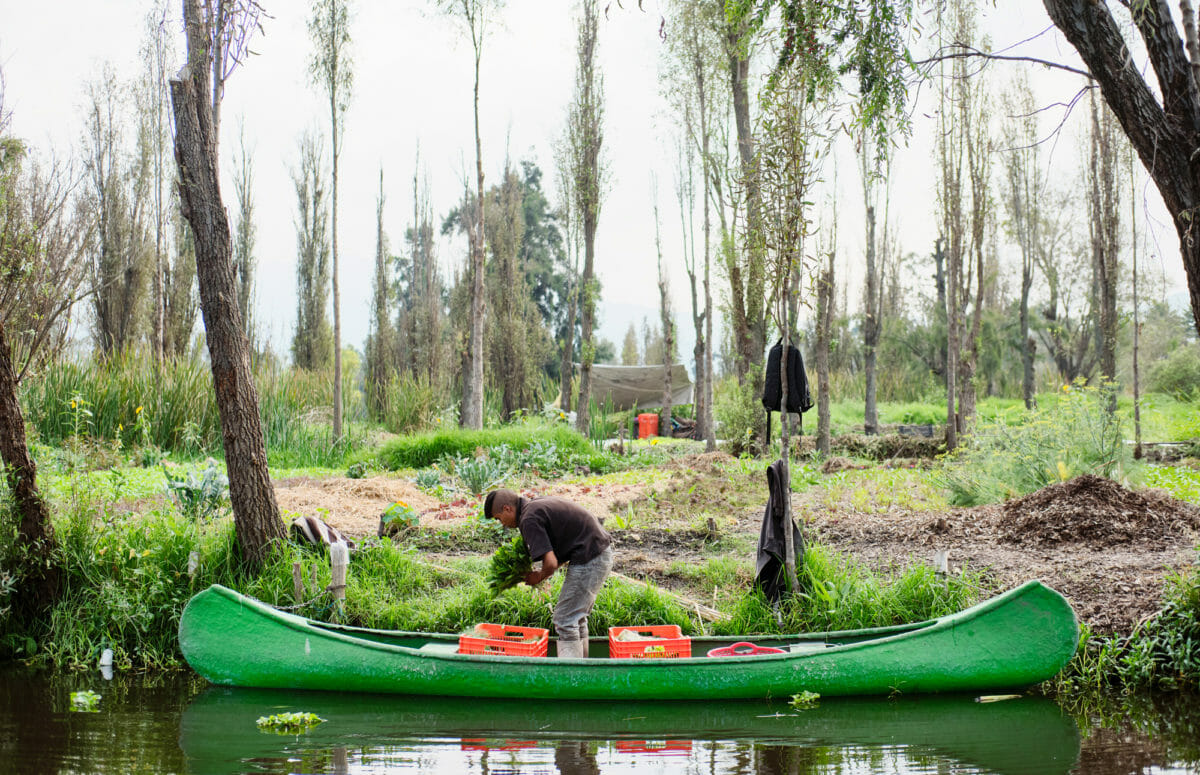
A farmer harvests produce from chinampas in Xochimilco.by Leila Ashtari
Most visitors to Xochimilco, in the south of Mexico City, come to ride its canals, eat, drink and listen to floating mariachi bands. Few, however, realize that this reserve is the last example of an ancient way of farming on water called chinampas. It’s a method that is 1,300 years old and is disappearing due to cultural, economic and climatic threats.
When the Aztecs settled an island in the middle of Lake Texcoco (where Mexico City stands today), they built these floating gardens to feed their growing city of Tenochtitlan. The chinampas were an innovative solution given the lake-based location: They built artificial islands using wooden stakes and reeds in a grid pattern, accessed by canals, on the shallow lake bed. The method proved to be very efficient and fertile.
However, when the Spanish arrived and defeated the Aztecs, they drained the lakes and filled them in, destroying the chinampas. Only one lake remains from the original five and its canals mostly dried up in the 1950s, almost dooming the future of the chinamperos (the farmers who tend to these floating crops).
Of the remaining 2,200 hectares in Xochimilco, 60 percent are idle or abandoned and 17 percent have been illegally urbanized. Only about 80 families continue farming on chinampas. Yolcan, a project started in 2011 to revive and rejuvenate the chinampas, works with four families, focusing on organic agriculture and inventive techniques to deal with water pollution. They farm about eight hectares and what they cultivate supplies some of the city’s top restaurants. They also deliver more than 300 CSA baskets each week. The work has been slow and challenging, but Yolcan is proof that the chinampas can be revived—one study has shown that the whole of Mexico City could be fed if these floating farms were fully developed.
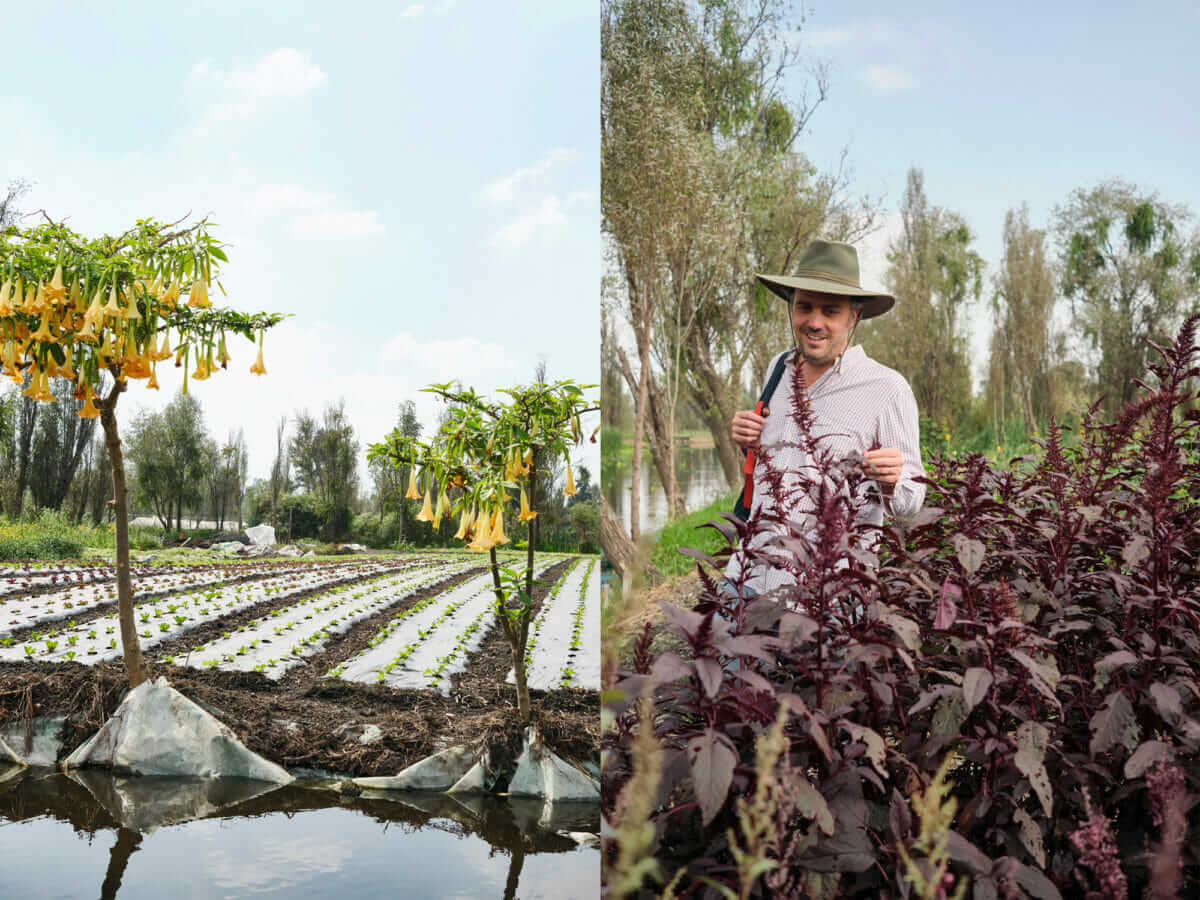
Lucio Usobiaga (right), a Mexico City native, co-founded Yolcan with his old friend Antonio Murad after a business selling organic food didn’t work out. He studied philosophy, but he forewent a PhD to focus on Yolcan. He started by working with a family of chinamperos and went on to rent a chinampa to begin producing. He has had to educate himself in organic and permaculture farming techniques. Yolcan now also works with farmers in Hidalgo, Puebla and Texcoco to diversify what produce they can supply and provide more opportunities for farmers.
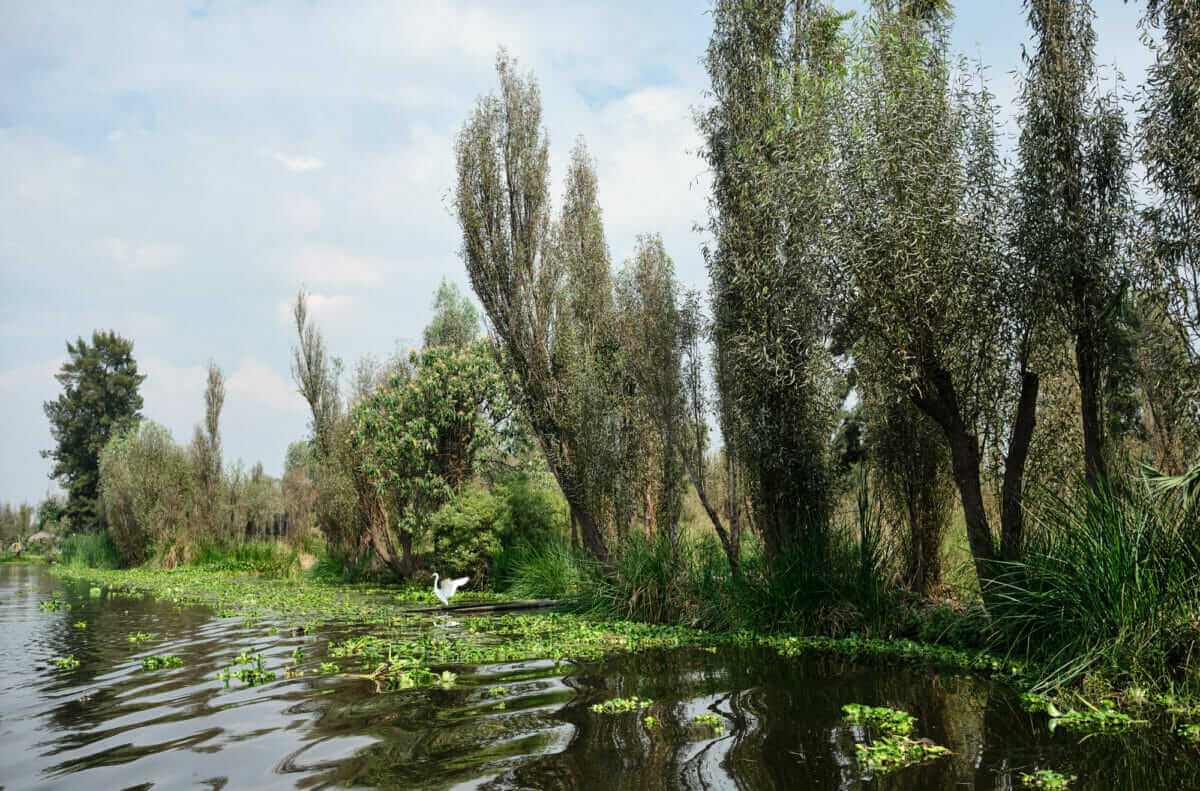
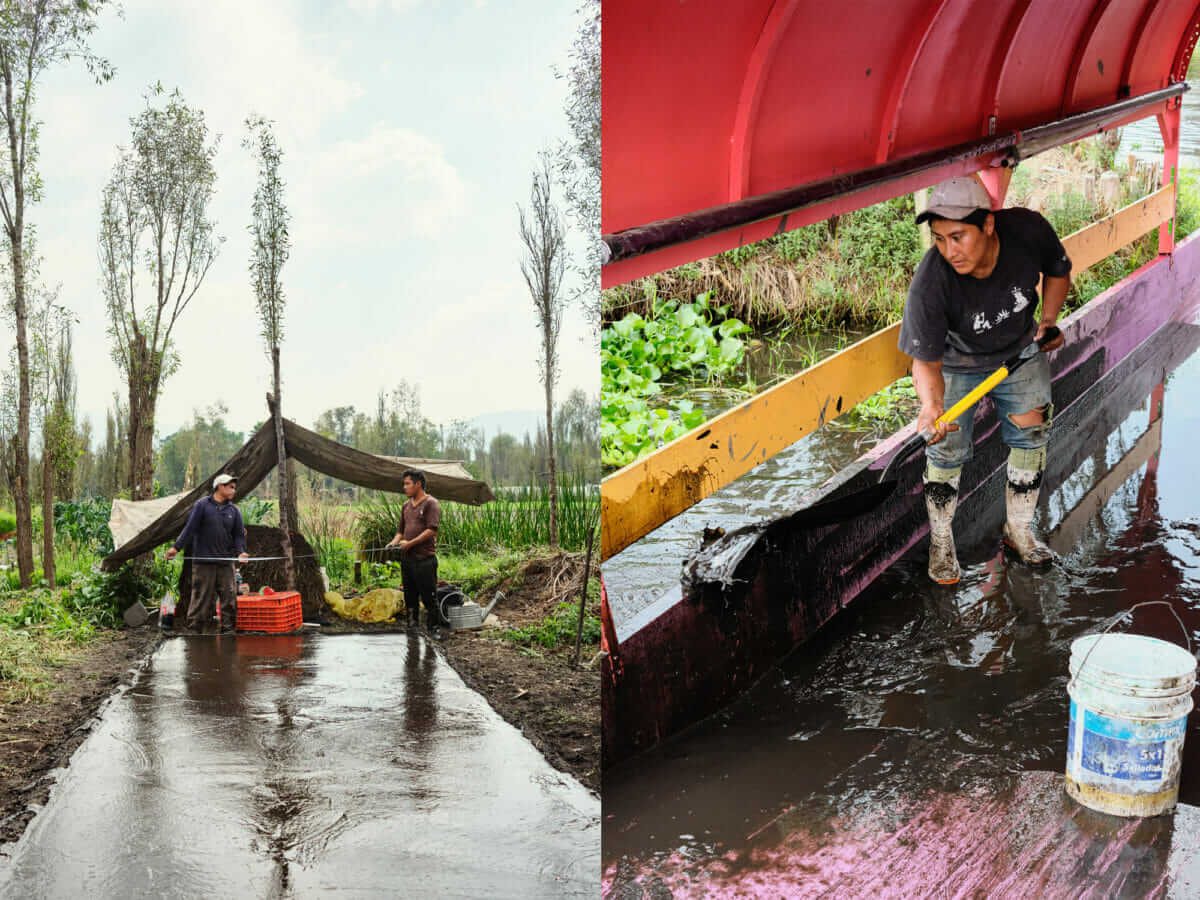
To germinate seeds, farmers dredge mud from the bottoms of canals—but only certain canals as the mud must have a specific texture. They pour it into a rectangular bed and let it dry for a day. Then they cut the mud into small squares and plant a seed in each one. The bed is covered for two to three weeks before the germinations are transplanted.

The water in the canals of Xochimilco is very polluted with toxins and heavy metals. So farmers are experimenting with biofiltration. Small canals are sliced into the chinampas and various plants are cultivated in a procession. The water slowly moves from one section to the next as it is filtered, and after a few months, the clean water can be used to irrigate the crops.

Javier Cruz (left) is originally from Puebla but now lives in Xochimilco. He started working with Yolcan six years ago, left for personal reasons, but recently rejoined the collective.
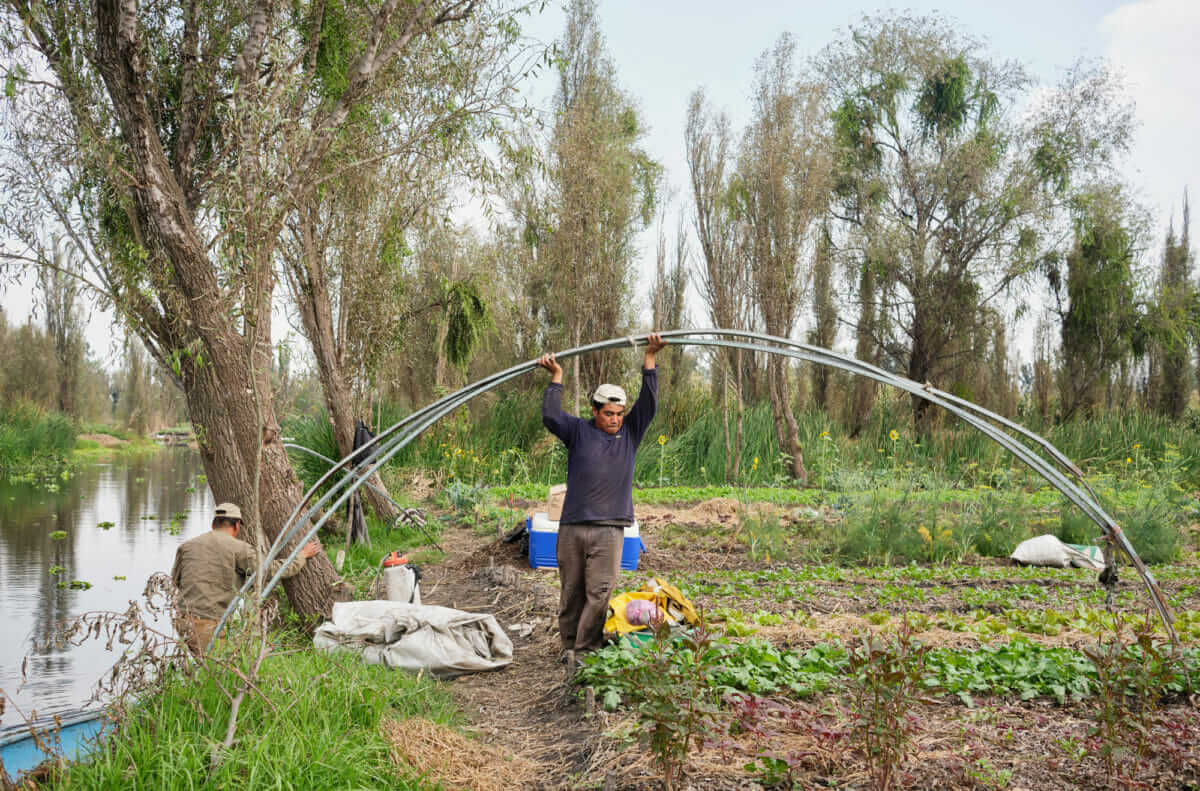
Cruz offloads hoops to create a structure to cover the germination beds. Everything must be brought in by boat in the chinampas.

With the ability to farm year round, Yolcan mostly focuses on growing leaves, roots and brassicas. Plants from the nightshade family are more difficult to grow here. Farmers also grow at least half a dozen different types of lettuce, kale, collards, broccoli and many other crops.

Noé Coquis Salcedo comes from a family of chinamperos and he owns his own chinampa. Yolcan’s goal is for a square kilometer of chinampa to generate 20,000 ($1,025) pesos per month for farmers like him.
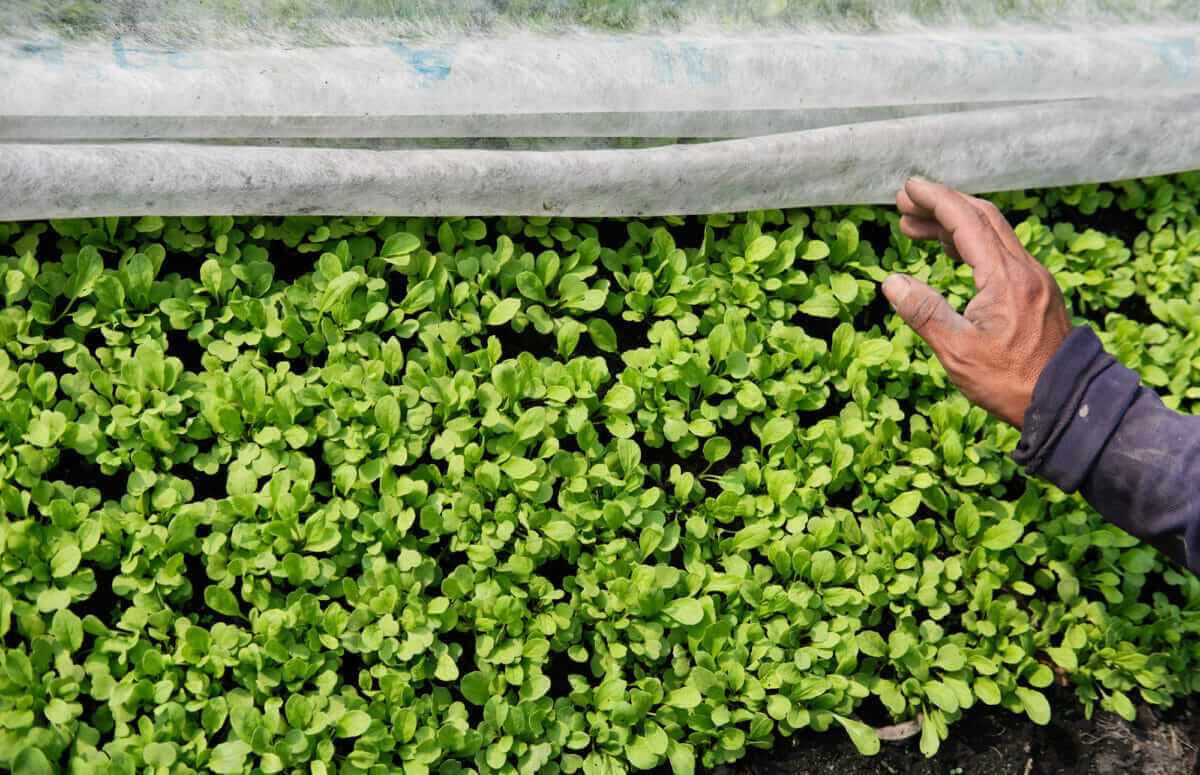
One of the greatest challenges is fighting illegal construction of homes in the chinampas. Authorities haven’t shown any interest in stopping this invasion and more land is lost each year. A complicating factor is that many of the chinampas are abandoned and there is no record of who owns the land.
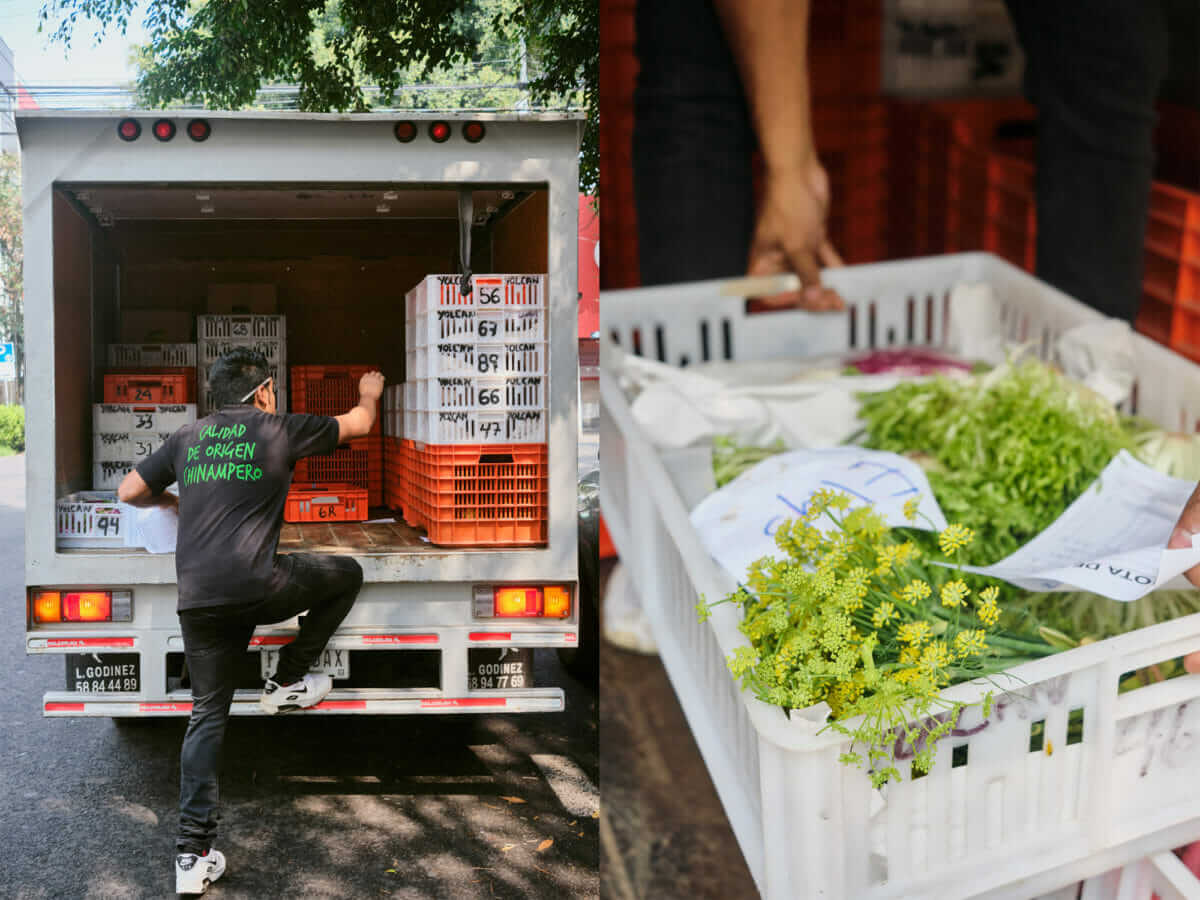
Each day, Yolcan sends out a message to chefs with what produce is available. At that moment, chefs race to place their orders on a first-come, first-serve basis. And each day, the harvest is delivered to them. When Yolcan first started, Usobiaga had to cold-call on restaurants to find customers. He found early support from chefs such as Gabriela Cámara, of Contramar, and Jair Téllez, of Amaya.
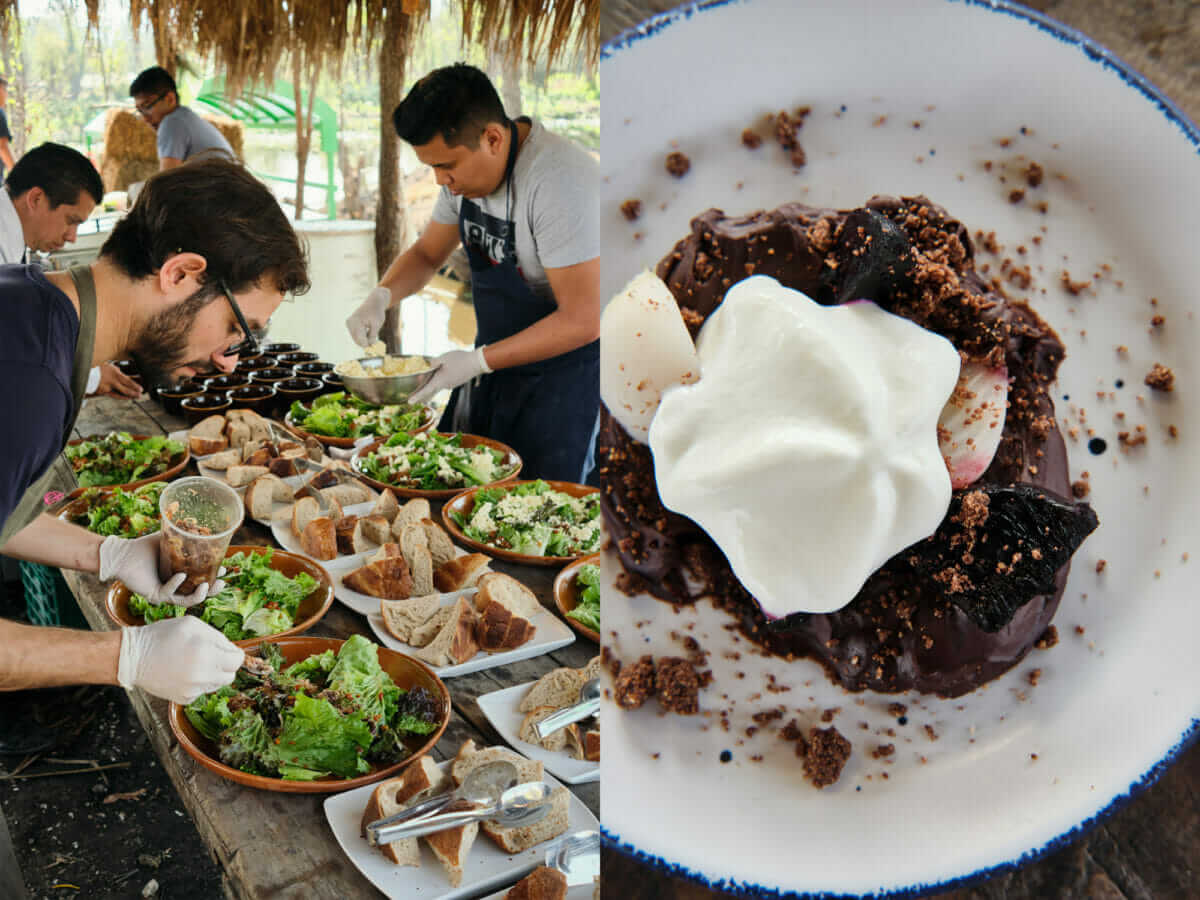
As a way to connect people to the chinampas and teach them about where their food comes from, Yolcan hosts tours as well as monthly meals with guest chefs. In November, chef Joaquin Cardoso of Loup Bar served a menu that used carrots, lettuce, beets and talamayota squash from the chinampas.
Follow us
This work is licensed under a Creative Commons Attribution-NoDerivatives 4.0 International License.
Want to republish a Modern Farmer story?
We are happy for Modern Farmer stories to be shared, and encourage you to republish our articles for your audience. When doing so, we ask that you follow these guidelines:
Please credit us and our writers
For the author byline, please use “Author Name, Modern Farmer.” At the top of our stories, if on the web, please include this text and link: “This story was originally published by Modern Farmer.”
Please make sure to include a link back to either our home page or the article URL.
At the bottom of the story, please include the following text:
“Modern Farmer is a nonprofit initiative dedicated to raising awareness and catalyzing action at the intersection of food, agriculture, and society. Read more at <link>Modern Farmer</link>.”
Use our widget
We’d like to be able to track our stories, so we ask that if you republish our content, you do so using our widget (located on the left hand side of the article). The HTML code has a built-in tracker that tells us the data and domain where the story was published, as well as view counts.
Check the image requirements
It’s your responsibility to confirm you're licensed to republish images in our articles. Some images, such as those from commercial providers, don't allow their images to be republished without permission or payment. Copyright terms are generally listed in the image caption and attribution. You are welcome to omit our images or substitute with your own. Charts and interactive graphics follow the same rules.
Don’t change too much. Or, ask us first.
Articles must be republished in their entirety. It’s okay to change references to time (“today” to “yesterday”) or location (“Iowa City, IA” to “here”). But please keep everything else the same.
If you feel strongly that a more material edit needs to be made, get in touch with us at [email protected]. We’re happy to discuss it with the original author, but we must have prior approval for changes before publication.
Special cases
Extracts. You may run the first few lines or paragraphs of the article and then say: “Read the full article at Modern Farmer” with a link back to the original article.
Quotes. You may quote authors provided you include a link back to the article URL.
Translations. These require writer approval. To inquire about translation of a Modern Farmer article, contact us at [email protected]
Signed consent / copyright release forms. These are not required, provided you are following these guidelines.
Print. Articles can be republished in print under these same rules, with the exception that you do not need to include the links.
Tag us
When sharing the story on social media, please tag us using the following: - Twitter (@ModFarm) - Facebook (@ModernFarmerMedia) - Instagram (@modfarm)
Use our content respectfully
Modern Farmer is a nonprofit and as such we share our content for free and in good faith in order to reach new audiences. Respectfully,
No selling ads against our stories. It’s okay to put our stories on pages with ads.
Don’t republish our material wholesale, or automatically; you need to select stories to be republished individually.
You have no rights to sell, license, syndicate, or otherwise represent yourself as the authorized owner of our material to any third parties. This means that you cannot actively publish or submit our work for syndication to third party platforms or apps like Apple News or Google News. We understand that publishers cannot fully control when certain third parties automatically summarize or crawl content from publishers’ own sites.
Keep in touch
We want to hear from you if you love Modern Farmer content, have a collaboration idea, or anything else to share. As a nonprofit outlet, we work in service of our community and are always open to comments, feedback, and ideas. Contact us at [email protected].by Shaun Pett and Leila Ashtari, Modern Farmer
December 9, 2019
Modern Farmer Weekly
Solutions Hub
Innovations, ideas and inspiration. Actionable solutions for a resilient food system.
ExploreExplore other topics
Share With Us
We want to hear from Modern Farmer readers who have thoughtful commentary, actionable solutions, or helpful ideas to share.
SubmitNecessary cookies are absolutely essential for the website to function properly. This category only includes cookies that ensures basic functionalities and security features of the website. These cookies do not store any personal information.
Any cookies that may not be particularly necessary for the website to function and are used specifically to collect user personal data via analytics, ads, other embedded contents are termed as non-necessary cookies.
I’ve visited the area, fantastic place. Floated the main canal, drank pulque and ate. It makes me proud to See change at work! Inspire